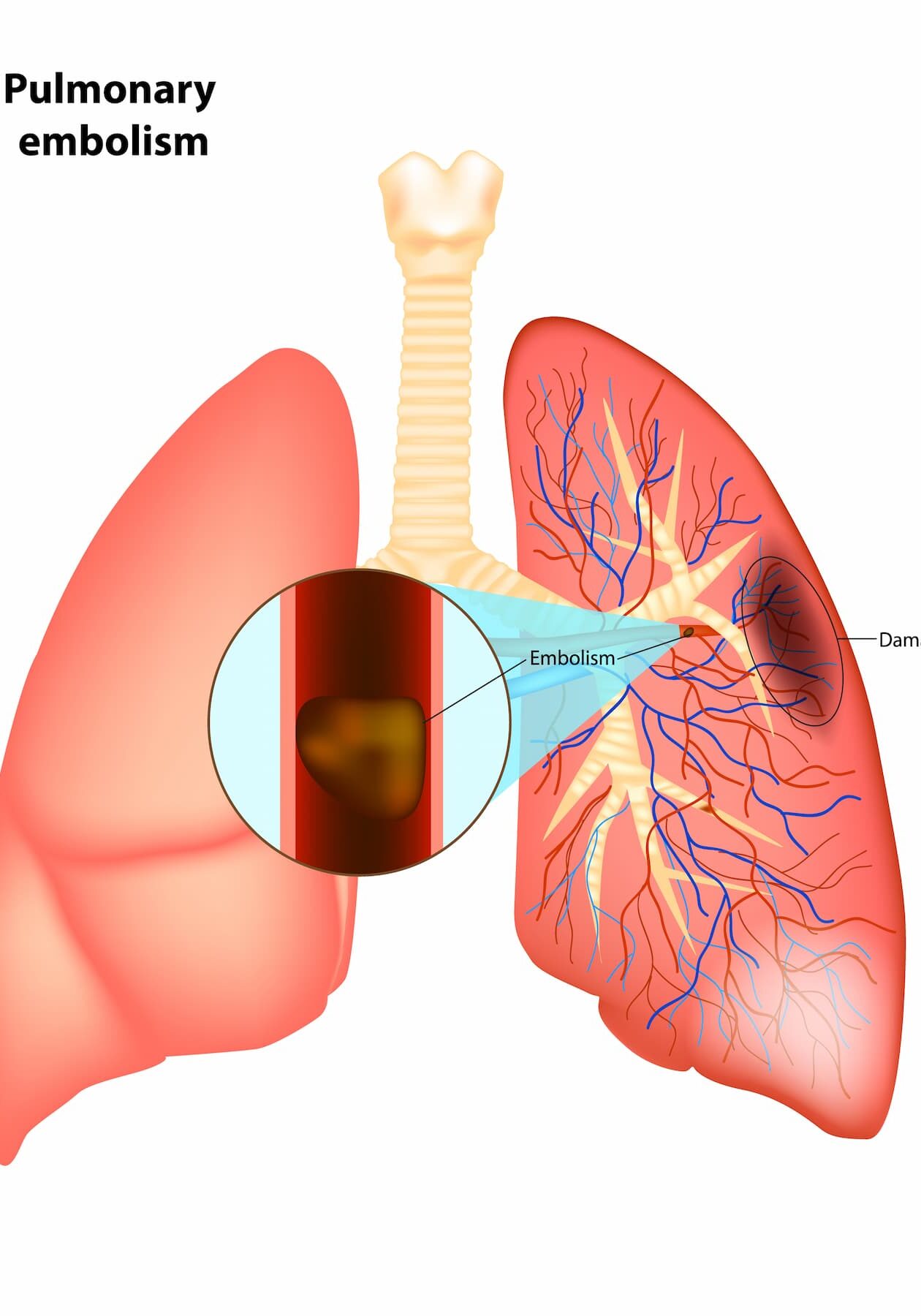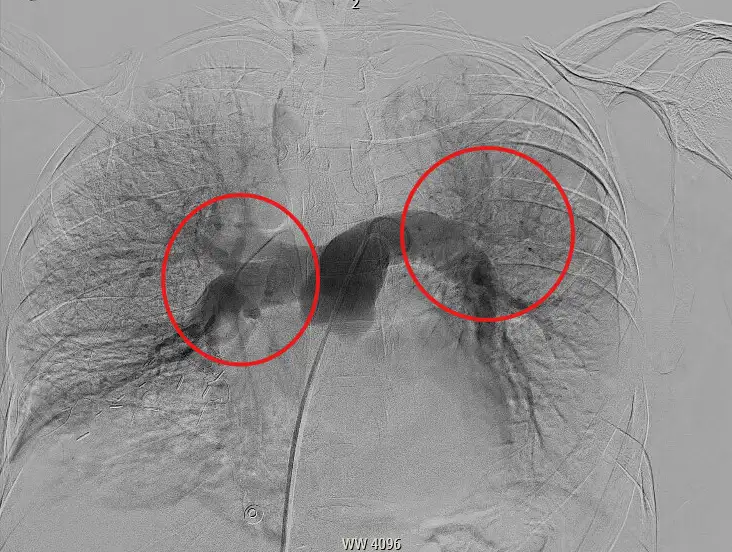Pulmonary Embolism
Pulmonary embolism is a sudden blockage of an artery in the lung, usually caused by a blood clot in the pulmonary artery, which carries blood from the heart to the lungs. It is considered a potentially life-threatening condition that requires immediate medical intervention. The severity of the condition depends on the size of the blood clot. The chances of surviving a pulmonary embolism increase with prompt diagnosis and treatment.


Treatment
There are several effective treatment options for pulmonary embolism. Treatment begins immediately after diagnosis to prevent complications that could be life-threatening. Oxygen therapy is administered right away to relieve breathlessness. Your vascular surgeon will determine the most suitable treatment based on the severity of your condition.
Schedule an Appointment Today
If you or a loved one may benefit from treatment, book an appointment with us today!
Prevention
Preventing pulmonary embolism begins with the prevention of deep vein thrombosis (DVT). The following steps can help reduce the risk of pulmonary embolism
1
Engage in daily physical exercise and stay active.
2
Adopt healthy eating habits and a balanced lifestyle.
3
Follow your doctor's instructions regarding anticoagulant medications after certain surgeries.
Important Links
Practice Location
- © Dr. Neil Desai, Vascular Surgeon Cypress, Houston, TX

